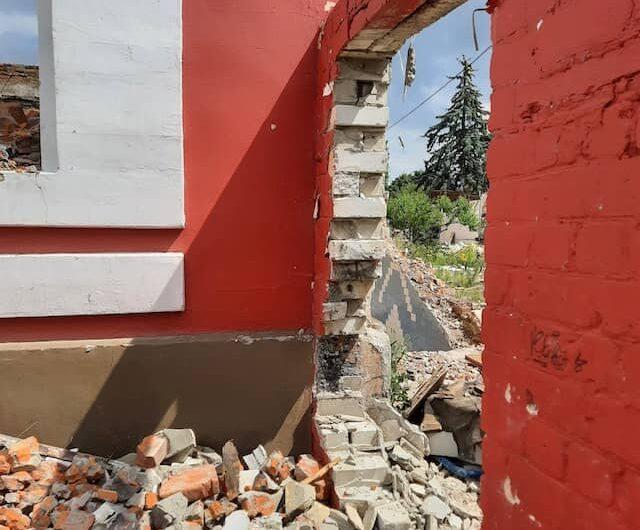Severe weather is the new normal. Recent floods in California, tornadoes in Alabama, and freezing temperatures in New York are just the tip of the ever-melting iceberg. In 2022 alone, the United States experienced 18 natural disasters, including wildfires, severe storms, tropical cyclones, flooding, freezing, and drought, costing $1 billion dollars.
Research indicates that climate disasters will become more frequent and produce more damage. In 1980, the US experienced just $3 billion in climate events. But these events have steadily increased, hitting $22 billion in damages in 2020.
Your business doesn’t have to suffer from a lack of preparedness. From picking the right property to weather-proofing your infrastructure, here are five ways to be resilient in the face of climate change.
1. Understand your location
Knowing the climate risks of your area will help avoid high costs down the road. But this could be harder than it sounds given that, in some cases, property owners may not share information, such as flood history, with a prospective buyer or may not have that information to start with.
Thankfully, there are ways to find out about potential risks. For example, depending on which state you live in, there may be flood disclosure laws that make finding out about your property much easier.
In Texas, sellers must tell you everything, including whether or not there was previous water damage due to flooding or if the property is located in a 100-year or 500-year floodplain or a reservoir. Other states, like Minnesota, require sellers to disclose anything that could “adversely and significantly impact a buyer’s use and enjoyment of the property.” Some states, such as Utah, have no requirements to disclose past information.
If your state does not require any disclosures, you can do your research. Websites like FEMA National Risk Index, Risk Factor, and Climate Check let you search properties by address and calculate risk.
2. Find the right insurance
Once you understand your risks, you may need to find insurance. This isn’t as easy as it sounds. While insurance plays a crucial role in protecting property owners, insurance prices are rising as the industry is struggling to keep up with the demands of climate disasters. In 2021, the industry reached a 10-year high for covering losses from disasters at a whopping $42 billion, increasing premiums 12.1% between 2021 and 2022.
To keep up with these threats, the insurance industry is creating new risk rating systems for climate insurance. These new rating systems have increased insurance prices for many property owners. However, there are ways to reduce your risk rating by disaster-proofing your property.
As you look for policies, research the insurer’s risk rating and find ways to lower your risks.
3. Prevent damage before the storm
Given the high price of insurance and the instability in the industry, preventing weather damage will help you avoid high costs. Flooding and high winds cause most of the damage. For intense winds, protecting windows, securing roofing, and securing loose items will do most of the job, but water damage may require more preparation.
Whether designing a new building or retrofitting an old one, there are two ways to protect against flooding: “wet floodproofing” and “dry floodproofing.”
For wet floodproofing, water-resistant building materials and a first story with minimal usage, reserved for light storage or parking, allow water to flow through the first level of the building without taking down the structure. For “dry floodproofing,” you can seal the building to flood waters and use removable barriers to keep water away from the structure.
While these upgrades may be costly, you can qualify for funding to help reduce costs. For example, you can get financial assistance through a Hazard Mitigation Grant.
If you experience damage from a flood, you may be able to get support from your local government to implement changes as you rebuild. In San Francisco, the city government launched a relief program offering up to $5,000 for businesses that experienced damage in the flood zone and $2,000 for companies outside the zone.
4. Protect against fires
Depending on where you live, you may be at greater risk from wildfires.
Invest in fire-grade materials, including mesh screening and non-combustible gutters and fences, to help keep embers out of your home and prevent fire from entering. You can also purchase non-flammable plants to build a barrier between your home and fire.
As with storm damage, if your local government has a Hazard Mitigation Grant, they may be able to help fund some upgrades to help you protect against fires.
5. Participate in resilience hubs
Most of these solutions have focused on long-term strategies, but disasters also have immediate consequences. Be sure to stock up on water and food and have an evacuation plan.
Find out if your area has a “resilience hub,” which are designed to provide shelter, clean energy, and other resources to communities immediately following extreme weather events. Participating in developing these hubs can help ensure your business continues to thrive during disasters.
Thanks for reading! Do you want to create thought leadership articles like the one above? If you struggle to translate your ideas into content that will help build credibility and influence others, sign up to get John’s latest online course “Writing From Your Voice” here.




